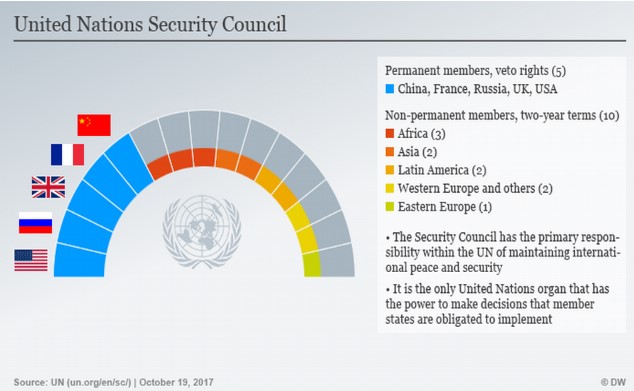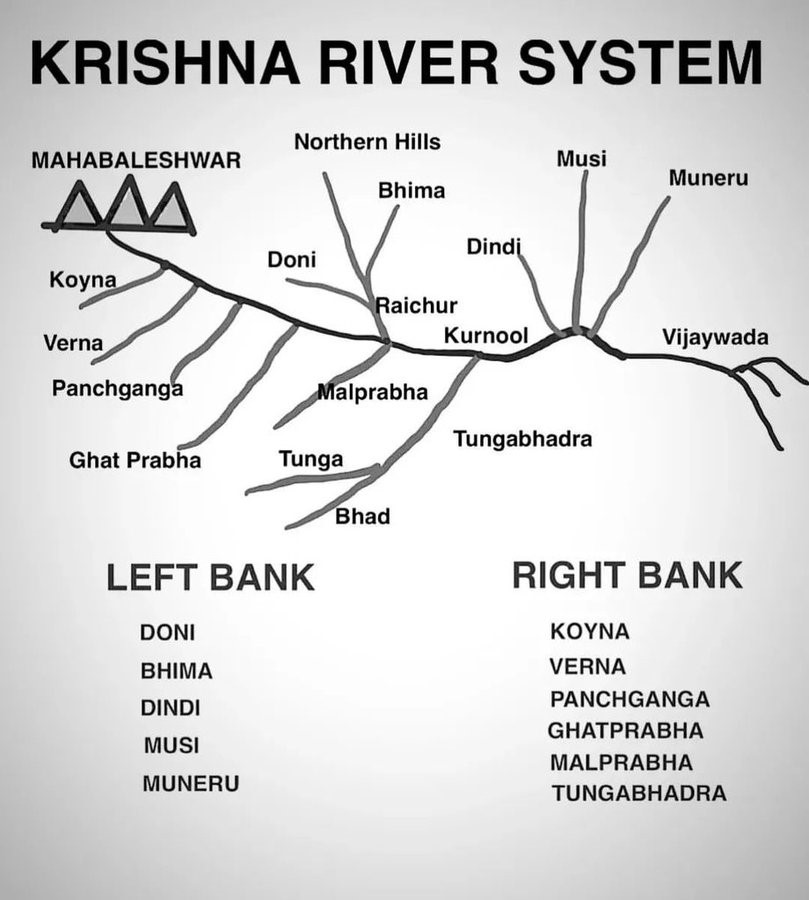- Home
- Prelims
- Mains
- Current Affairs
- Study Materials
- Test Series
July 25, 2024 Current Affairs
United Nations Security Council reform
What is the United Nations Security Council?
- The United Nations Security Council, established under theUN Charter in 1945, constitutes one of the UN''s six principal organs.
- Comprising 15 members, it includes5 permanent members (P5) and 10 non-permanent members elected for two-year terms.
- India''s participation in the Security Council has been as a non-permanent member during the periods of 1950-51, 1967-68, 1972-73, 1977-78, 1984-85, 1991-92, 2011-12, and 2021-22.
UNSC Reform
- UNSC reform refers to the process of revising and updating the structure, composition, and functioning of the United Nations Security Council (UNSC).
- The UNSC is one of the six principal organs of the United Nations and is primarily responsible for maintaining international peace and security.
- However, its current configuration and decision-making processes is not representative of the current geo-political realities.
- Hence, there is a demand for reform in the UNSC.

Why does the UN Security Council Need to be Reformed?
Representation and Legitimacy: The Security Council plays a crucial role in peacekeeping and conflict resolution, with binding decisions that impact all member states.
- To ensure these decisions are respected and implemented universally, the Council must possess the necessary authority and legitimacy, which requires representation reflecting the current global landscape.
Outdated Composition: The current composition of the Security Council, based on the geopolitical situation of 1945 and expanded marginally in 1963/65, no longer accurately represents the world stage.
- With 142 new countries joining the United Nations since its inception, regions like Africa, Asia, Latin America, and the Caribbeanlack adequate representation, necessitating adjustments to the Council''s composition.
- Recognition of Contributions:The UN Charter acknowledges that countries making substantial contributions to the organisation should have a role in the Security Council.
- This recognition underscores the candidacy of nations like India, Germany and Japan for new permanent seats, reflecting their meaningful contributions to the UN''s mission.
Risk of Alternative Decision-Making Forums: Without reform, there''s a risk that decision-making processes could shift to alternative forums, potentially diluting the Security Council''s effectiveness.
- Such competition for influence is counterproductive and not in the collective interest of member states.
Misuse of Veto Power: The utilisation of veto power has consistently faced criticism from numerous experts and the majority of states, labelling it as a "self-selected group of privileged nations" that lacks democratic principles and hinders the Council''s ability to take essential decisions if it conflicts with the interests of any of the P-5 members.
- In today''s global security landscape, relying on exclusive decision-making frameworks is deemed unsuitable.
Way Forward
- Engagement and Consensus Building:Fostering inclusive dialogues and consultations among member states, particularly focusing on the perspectives of underrepresented regions like Africa, Asia, Latin America, and the Caribbean.
- Amending the UN Charter:Encourage cooperation and coordination among all stakeholders, including the five permanent members, to facilitate the ratification process and ensure the amended Charter reflects contemporary global realities.
- Addressing Veto Power:Exploring avenues for reforming the use of veto power within the Security Council, considering proposals that balance the need for decisive action with concerns about fairness and inclusivity.
Sangameswara temple
Pattadakal''s Sangameshwara Temple, formerly known as Vijayeswara Temple, is a religious site. It was constructed around 733 AD by the Chalukya king, Vijayaditya Satyashraya. This temple is considered one of the oldest temples in India as well as the oldest temple in this region. The structure has an inner passage, a hall, and a sanctum and is built in the Dravidian architectural style.
- It is a large east-facing Dravida temple located on the south side of the Chandrasekhara temple. Inscriptions at the temple, as well as other evidence, place it between 720 and 733 CE.
- The temple was left unfinished after the death of its patron king, Vijayaditya, in 734 CE, though work continued intermittently in later centuries.
- Other important Sangameshwara temples were built during the Badami Chalukya reign, between 543 and 757 CE, such as the one at KuDavelli; in modern times, this temple was relocated to Alampur after extensive restoration work.
- Inscriptions discovered in this and other temples mention sponsor names from various centuries, including those of Hindu queens, implying that they actively supported temple architecture and arts.
Krishna river
- The Krishna River originates in the Western Ghats, near the town of Mahabaleshwar in Maharashtra, at an elevation of about 1,337 meters.
- The river is about 1,400 kilometres (870 mi) long, making it the third-longest river in India after the Ganges and the Godavari.
- The Krishna River basin covers an area of about 258,948 square kilometres, which is nearly 8% of the total geographical area of India.
- The river flows through the states of Maharashtra, Karnataka, Telangana, and Andhra Pradesh, before emptying into the Bay of Bengal.
- The main tributaries of the Krishna River are the Ghataprabha, the Malaprabha, the Bhima, the Tungabhadra, and the Musi rivers.

INS Brahmaputra
INS Brahmaputra is the first of the indigenously built ''Brahmaputra'' class-guided missile frigates. The Brahmaputra class, which replaces the Talwar class, is an indigenous upgrade on the Godavari class of frigates. The class’s next two ships, INS Betwa and INS Beas, were similarly given river names; INS Brahmaputra is the class lead ship. It was built by state-run Garden Reach Shipbuilders and Engineers Limited (GRSE).
- The ship has a displacement of 5,300 tonnes, a length of 125 metres, and a beam of 14.4 metres
- It is capable of speeds of more than 27 knots.
- The ship is manned by a crew of 40 officers and 330 sailors.
- The ship is fitted with medium-range, close-range and anti-aircraft guns, surface-to-surfaceand surface-to-air missiles, and torpedo launchers.
- The ship has a wide array of sensors covering all facets of maritime warfare and is capable of operating Seeking and Chetak helicopters.
Vivad se Vishwas
It is a voluntary settlement scheme to resolve long-standing contractual disputes involving government agencies. It is designed specifically for disputes where the Arbitral Award is under challenge in a court. Arbitral Award is an award that brings finality to the arbitral proceeding. Under the scheme, standardised terms will be introduced, and graded settlement options will be provided based on the level of pendency of the dispute.
- Implementation: It will be implemented through an online functionality on the govt marketplace portal.
- Coverage: The scheme will cover all disputes with Central government agencies, including autonomous bodies, public sector banks and financial institutions, central public sector firms, union territories, and the National Capital Territory of Delhi, along with their respective agencies. However, organizations such as metro corporations, where the Centre holds a 50% stake, can choose to opt out of the scheme at their discretion, provided they secure board approvals.
- Settlement Amount: For cases involving Court awards, the settlement amount offered to the contractor will be up to 85% of the net amount awarded or upheld by the court, while the same threshold will be “up to” 65% of the net amount in case of arbitral awards.









 Latest News
Latest News
 General Studies
General Studies